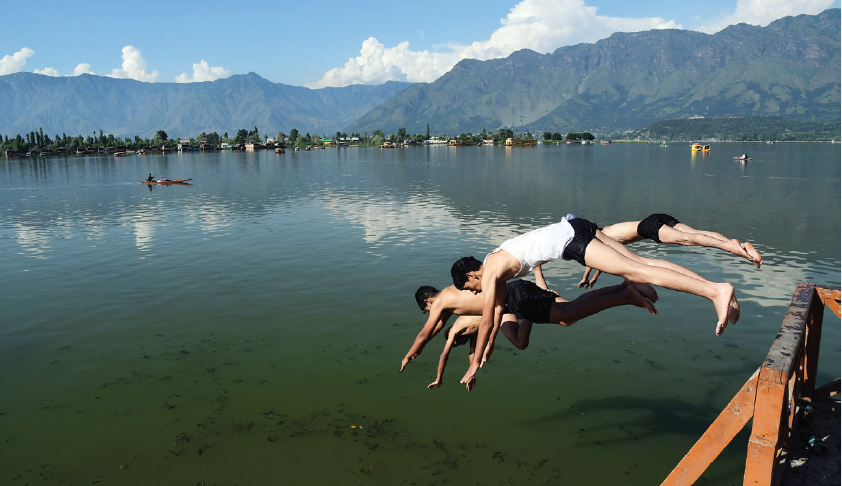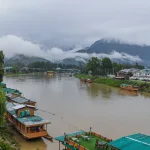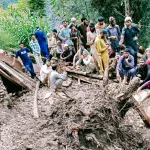Srinagar, July 04: Amid an unrelenting heatwave sweeping across Jammu and Kashmir, Srinagar on Friday recorded its second hottest day of the season, touching 35.3°C, surpassing even Jammu’s 35.0°C. The unusual spike has turned the summer capital into one of the hottest spots in the region, triggering concern among residents and authorities alike.
According to Director of the Meteorological Department,Dr.Mukhtar Ahmad, Friday’s temperature in Srinagar was just shy of the season’s peak,35.5°C recorded on June 24.
“The Valley is currently experiencing hot and humid conditions. A spell of light to moderate rain or thunderstorms with intense showers is likely towards late night or early morning on July 5,” Dr. Ahmad told Rising Kashmir.
The heatwave is expected to persist through Saturday, with temperatures potentially exceeding Friday’s highs. However, a significant drop in temperature and improvement in weather is expected from Sunday onwards, driven by an approaching rain system.
The MeT Department forecast indicates that between July 6 and 8,the region will witness generally cloudy skies, with intermittent light to moderate rainfall and thunderstorms in most parts.
“Some areas in the Jammu division may witness intense rainfall with heavy downpours at isolated locations. The weather is expected to remain unstable between July 9 and 10 as well, with scattered to widespread rainfall likely. From July 11 to 12, hot and humid conditions may return, though brief showers are expected at scattered locations,” it said.
As per Friday’s temperature data, Kupwara recorded the highest maximum temperature at 35.4°C, slightly above Srinagar’s 35.3°C.
Other places in the Valley also reported unusually high temperatures: Qazigund at 34.4°C, Kokernag at 33.4°C, and Pahalgam at 30.2°C. Tourist hotspot Gulmarg, however, remained relatively cool at 26.0°C. In the Jammu Division, Jammu recorded 35.0°C, Katra 32.0°C, Banihal 29.8°C, and Batote 27.0°C.
The MeT Department has also issued a weather advisory for July 6 to 8, warning of potential flash floods, landslides, mudslides, and shooting stones in vulnerable areas, especially in hilly terrain. A sharp rise in water levels is expected in rivers, streams, and local water bodies, which may lead to waterlogging in low-lying areas, it said.
“Farmers have been advised to suspend irrigation and other agricultural operations during this wet spell to avoid potential crop damage. The department urged the public to remain cautious, particularly those traveling on mountainous roads or residing near water bodies.”








